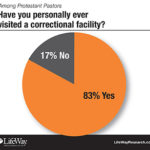FORT WORTH (BNG)—The article is more than five years old, but churches continue to wrestle with the question it raises: “Is Youth Ministry Killing the Church?”
The 2005 Christian Century blog shared a Presbyterian minister’s concern that youth ministry can separate churches along generational lines, robbing adults of a connection with younger members and alienating youth from the body of Christ. Both groups can be sapped of much-needed spiritual inspiration and growth.
Baptist ministers questioned recently about the blog agreed—and said it’s a subject getting a lot of discussion in ministerial circles lately.
While Fran Patterson described the headline as “a little over the top,” she concurred vital congregations find ways to integrate youth and adults on a regular basis. The topic came up during a conversation with another minister at a recent college football game.
“It’s important to me that the kids are part of the whole church family,” said Patterson, minister to youth at Broadway Baptist Church in Fort Worth. “We are segregated enough on Wednesday nights.”
The generational bifurcation of churches also has come up in conversations recently for Brian Foreman, a teacher and author of books on youth and youth ministry.
“It’s something I have been mulling over,” said Foreman, also an adjunct professor of Christian education at Campbell University in Buies Creek, N.C.
The dramatic compartmentalization of youth over the past 40 or so years has enabled generations to grow up without spiritual mentoring and “stunted the faith development of a lot of adults and teenagers,” he said.
In that time period, youth ministry has become professionalized, which he said can lead to those ministers bearing sole responsibility for the spiritual formation of youth.
Sign up for our weekly edition and get all our headlines in your inbox on Thursdays
“That’s really a dangerous place we’ve arrived at,” Foreman said.
Preventing isolation
Patterson, Foreman and other experts say the damage to a congregation can be palpable when youth spend most—or all—of their church time segregated from the rest of the congregation.
George Bullard, a South Carolina-based author and congregational coach, said the practice began when congregations started searching for ways to attract and keep youth in their churches.
Dedicated efforts to keep youth from leaving for megachurches helped create “a youth silo,” which sometimes includes separate worship and missions programs, Bullard said.
It can lead them to grow up forging peer-only relationships, which can skew their perception of the nature and purpose of communal faith, he said.
It also provides them with a narrow view of worship.
“They don’t learn about other styles of worship or core theology,” he said.
As a result, many reach adulthood disenchanted with more traditional forms of worship, Bullard said.
Of course, such stark lines between youth and adults have not developed in every congregation, Bullard said. And many others have created positions where youth and family ministry are combined.
That approach, he said, helps create lines of communication between the generations.
“There are an increasing number of churches who have a staff person ministering to youth and families,” Bullard said. “That is a way of avoiding doing youth ministry in isolation.”
Building relationships
Addressing the issue does not mean abandoning separate youth activities, Patterson said.
A variety of approaches have been employed at Broadway through the years. One was to conduct Sunday morning exchanges where adult Sunday school members cooked and served breakfast to the youth Sunday schoolers.
After eating, the adults play pool, ping-pong and other games with the youth in the youth areas of the church. Then they go to worship together as a group, Patterson said.
Ministry and mission cooperation is another way to build intergenerational relationships in a congregation, Patterson said.
At Broadway, youth help an adult class make weekly sack lunches to be donated to day laborers who work near the church. An annual Navajo mission trip is intentionally designed to blend generations, she said.
And routinely including youth in Sunday worship leadership will instill an understanding in them of how to be involved in church life as they grow into adulthood, Patterson said.
“We have a better chance of having young adults interested in continuing to be a part of the congregation if they know a little more about what’s going on,” she said.
Leadership opportunities
Wilshire Baptist Church in Dallas practices that principle by involving youth in the congregation’s leadership structures, Associate Pastor Mark Wingfield said.
A major success the congregation experienced in the past year came from offering youth opportunities to serve on committees and ministry teams with adults, Wingfield said.
“We haven’t forced anyone to serve, and we haven’t tried to put round pegs in square holes,” he said. “We simply have offered the opportunity, and those youth who want to serve on a committee or team are invited to do so.”
The result has been tremendous, he said. The youth have loved serving on Wilshire’s missions committee, Christian advocacy committee and the churchwide social committee.
“And the adults who serve alongside them love having the youth there,” Wingfield said.
It’s been an important development at Wilshire because it is a multigenerational church, he said.
But challenges exist. Adults often clamor for intergenerational Sunday school classes. “But the reality is that youth need and want their own space,” he explained.
Another trend, which says more about parents than it does their kids, is that fewer youth are able to stay for both Sunday school and worship, so one often is sacrificed for the other, Wingfield said.
Solutions to these challenges involve respecting the needs of different generations while finding ways to unite them.
“The key is to allow that space without creating silos,” Wingfield said.














We seek to connect God’s story and God’s people around the world. To learn more about God’s story, click here.
Send comments and feedback to Eric Black, our editor. For comments to be published, please specify “letter to the editor.” Maximum length for publication is 300 words.